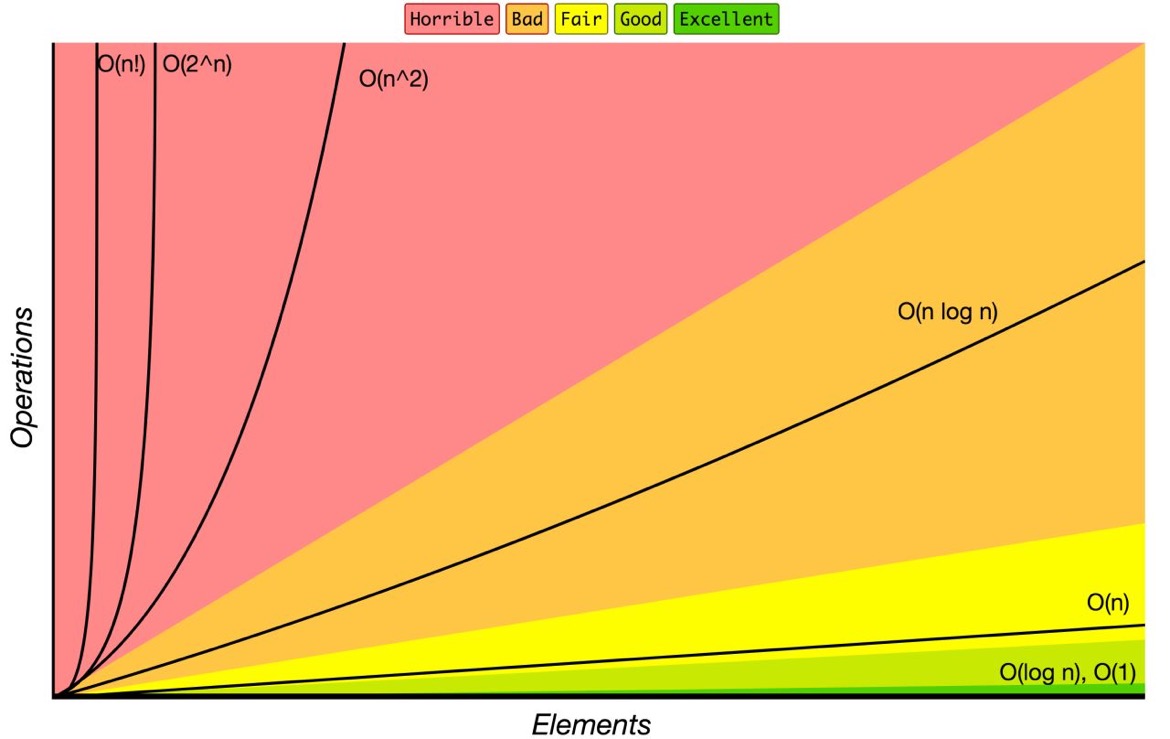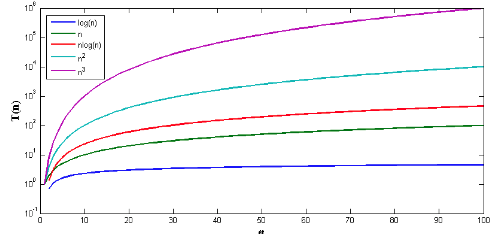Big O Notation
It describes how the performance of an algorithm scales with the size of the problem.
may be time to execute or amount of memory.
Size must be a quantitative measure of the scale of the problem. For example:
- Number of items to sort.
- Number of nodes in a graph.
An everyday example would be n people shaking hands in a room where the number of handshakes is and time to shake hands is .
Performance Families


Classifications ordered by decreasing efficiency:
- Constant: O(1)
- Logarithmic: O()
- Sublinear: O() for d < 1
- Linear: O(n)
- Linearithmic: O()
- Quadratic: O()
- Exponential: O()